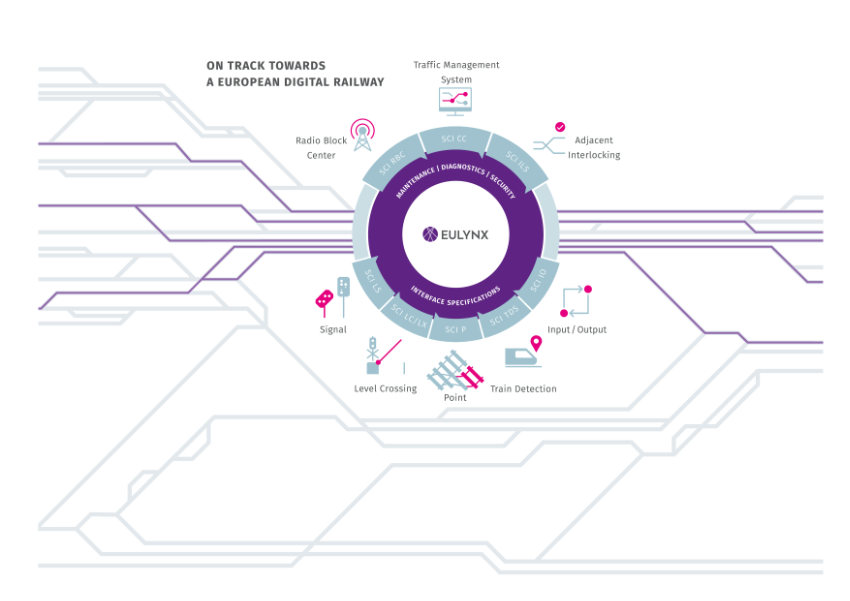EULYNX is a consortium composed of railway infrastructure managers, working on standardisation of railway signalling.
EULYNX was started to address the pressing issue of diversity and complexity in interlockings and their interfaces, which had resulted in high lifecycle costs across the industry. As infrastructure managers face large-scale obsolescence of signalling systems, a new strategy was needed. Standardised architecture and modular components, combined with the introduction of digital technologies, support the digital transformation of the railway signalling industry while reducing lifecycle costs and enhancing interoperability.
Interview with Mirko Blazic, Technical Lead at EULYNX.
What are the main areas of activity of the company?
Mirko Blazic: EULYNX’s primary activities revolve around interface specification development. The resulting modular architecture and standardised interfaces enable the decoupling between the interlockings and field components. This approach optimises the use of individual system components, facilitates migration strategies, reduces vendor lock-in risks and lowers overall lifecycle costs.
What’s the news about new products/services?
M.B: The focus of recent activities was on publication of Baseline set 4 Release 3 in June 2024. The documentation set includes 54 documents, with part of specifications fully integrated into the outputs of Europe’s Rail System Pillar.
Another key development is the launch of the EULYNX Academy, designed to meet the growing demand for training in railway signalling systems. The Academy will offer both online and onsite courses, structured into various modules that cater to different levels of expertise.
EULYNX is also focusing on product compliance and interoperability testing, and is intiating a cooperation to establish a testing laboratory, ensuring that the industry’s shift towards digitalisation is seamless and efficient.

What are the ranges of products/services?
M.B: EULYNX provides standardised reference architecture designed to reduce the complexity and lifecycle costs of railway signalling systems. This architecture includes harmonised specifications for subsystems and interfaces, including network and security specifications. The outputs are supported by Model-Based Systems Engineering to facilitate efficient design and implementation, and include simulators of interface behaviour. For compliance testing, a comprehensive test case catalogue is available.
As EULYNX shifts its focus towards deployment, a dedicated team supports infrastructure managers in integrating national specifications and preparing tenders.
What is the state of the market where you are currently active?
M.B: The European railway signalling market is in a critical phase of transformation, driven by the need to replace obsolete systems and the push towards digitalisation. EULYNX is playing a pivotal role in this transition by providing a stable and future-proof basis for procurement and development through its standardised, modular architecture.
What can you tell us about market trends?
The railway signalling market is increasingly moving towards standardisation and modularity. By introducing a modular architecture with standardised interfaces, EULYNX has significantly reduced the complexity and costs associated with traditional signalling systems. Industry is increasingly developing and offering standardised products. This approach also helps to consolidate the scarce sector resources to develop standardised and broadly applicable solutions.

What are the most innovative products/services marketed?
M.B: EULYNX’s key contribution to the railway industry was the introduction of a modular signalling architecture that decouples the signalling core from field components through standardised interfaces.
What estimations do you have for 2024?
M.B: In 2024, EULYNX expects to see continued progress in the deployment of its modular, standardised architecture across Europe and beyond, as more and more projects become based on EULYNX specifications.
This year also brings the sectors most important event – the EULYNX consortium will also present its results and compliant industry solutions at InnoTrans 2024.
New infrastructure managers are approaching the consortium to learn about the benefits EULYNX brings, we are expecting further growth with new members, also outside of Europe.
EULYNX remains dedicated to bring the rail sector towards a future of increased standardisation and digitalisation.

